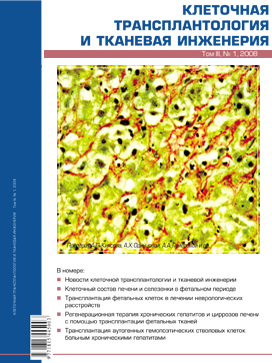The tendention in creative tissue engineering of osteoplastice
- Authors: Desyatnichenko K.S.1, Kurdyumov S.G.1
-
Affiliations:
- JSC «NPO “POLYSTOM"»
- Issue: Vol 3, No 1 (2008)
- Pages: 62-69
- Section: Discussion and general theoretical works
- URL: https://genescells.ru/2313-1829/article/view/317439
- ID: 317439
Cite item
Abstract
In this papier there are basic requirements for materials which are intended for compensation of defects of bones by means of their implantation, and also there are approaches for choosing the sources and technical receptions in industrial manufacture. The dates about approbation in experiment of osteoplastic materials of INDOST, which are developed in compliance with this criterions are shown.
Keywords
Full Text
About the authors
K. S. Desyatnichenko
JSC «NPO “POLYSTOM"»
Author for correspondence.
Email: info@eco-vector.com
Russian Federation, Moscow
S. G. Kurdyumov
JSC «NPO “POLYSTOM"»
Email: info@eco-vector.com
Russian Federation, Moscow
References
Supplementary files






















